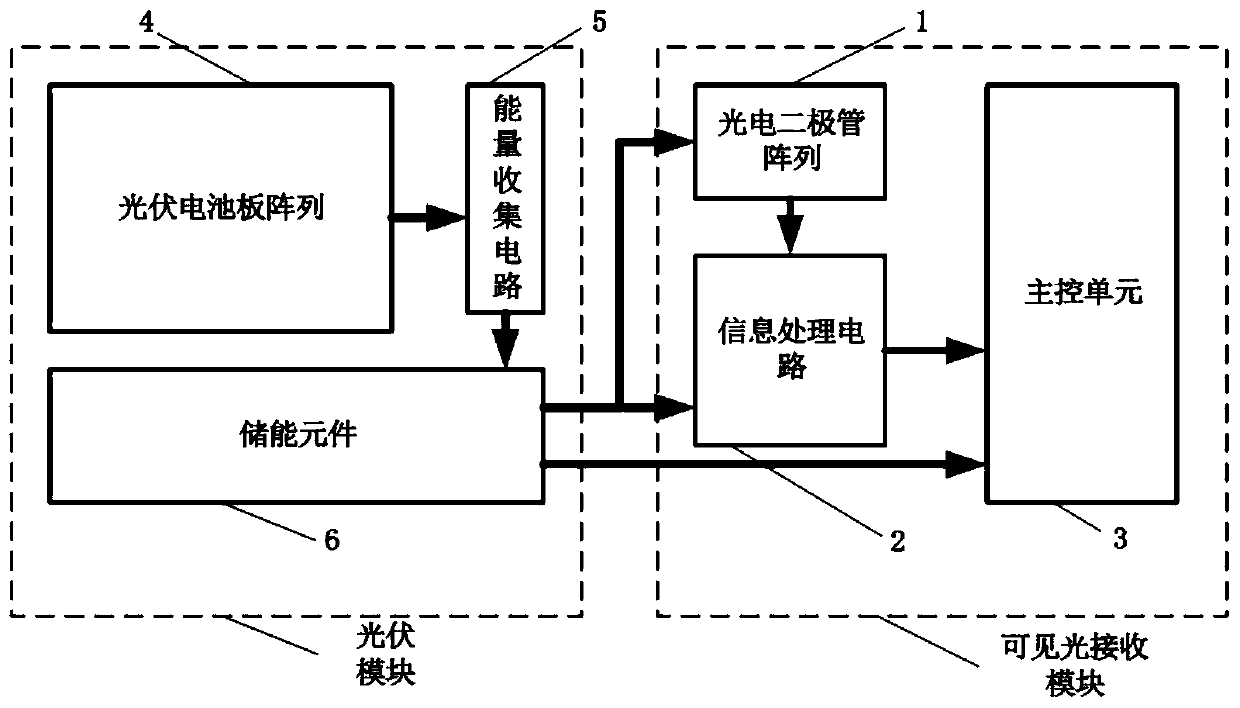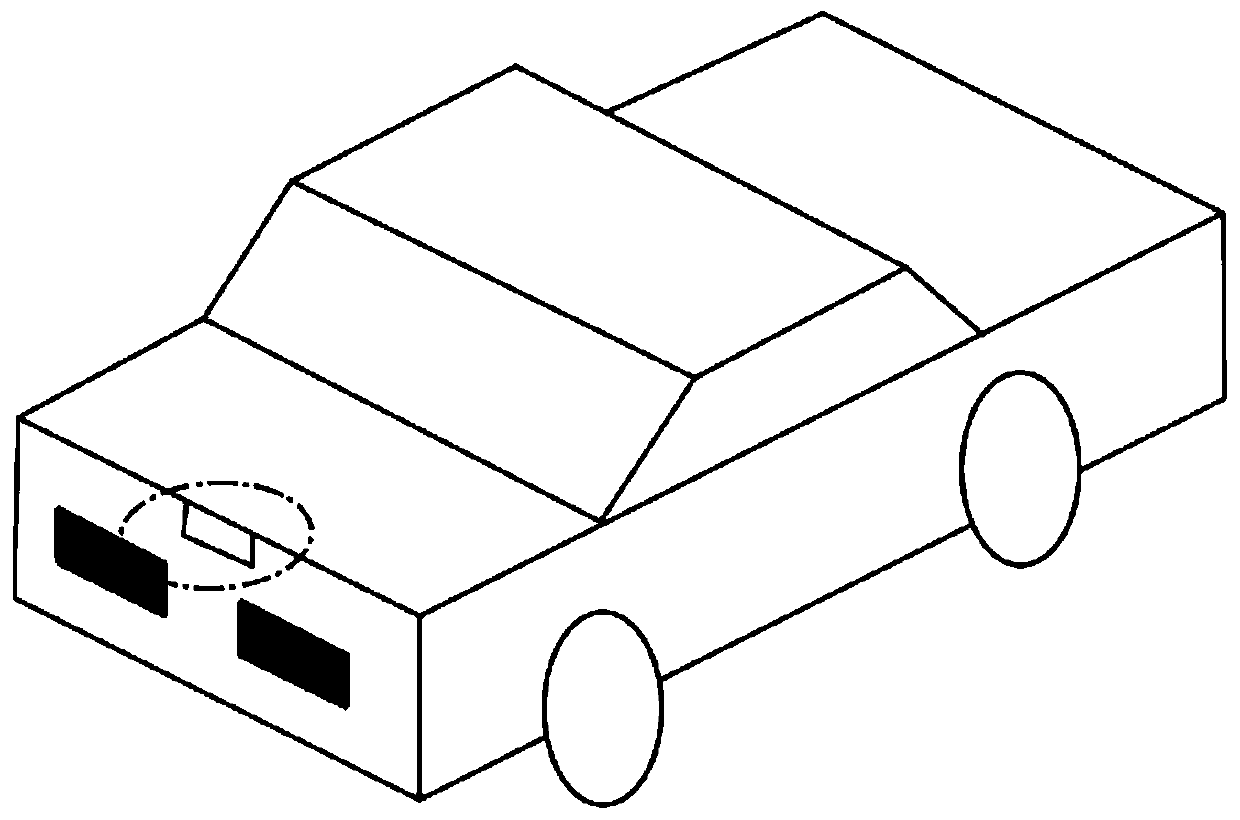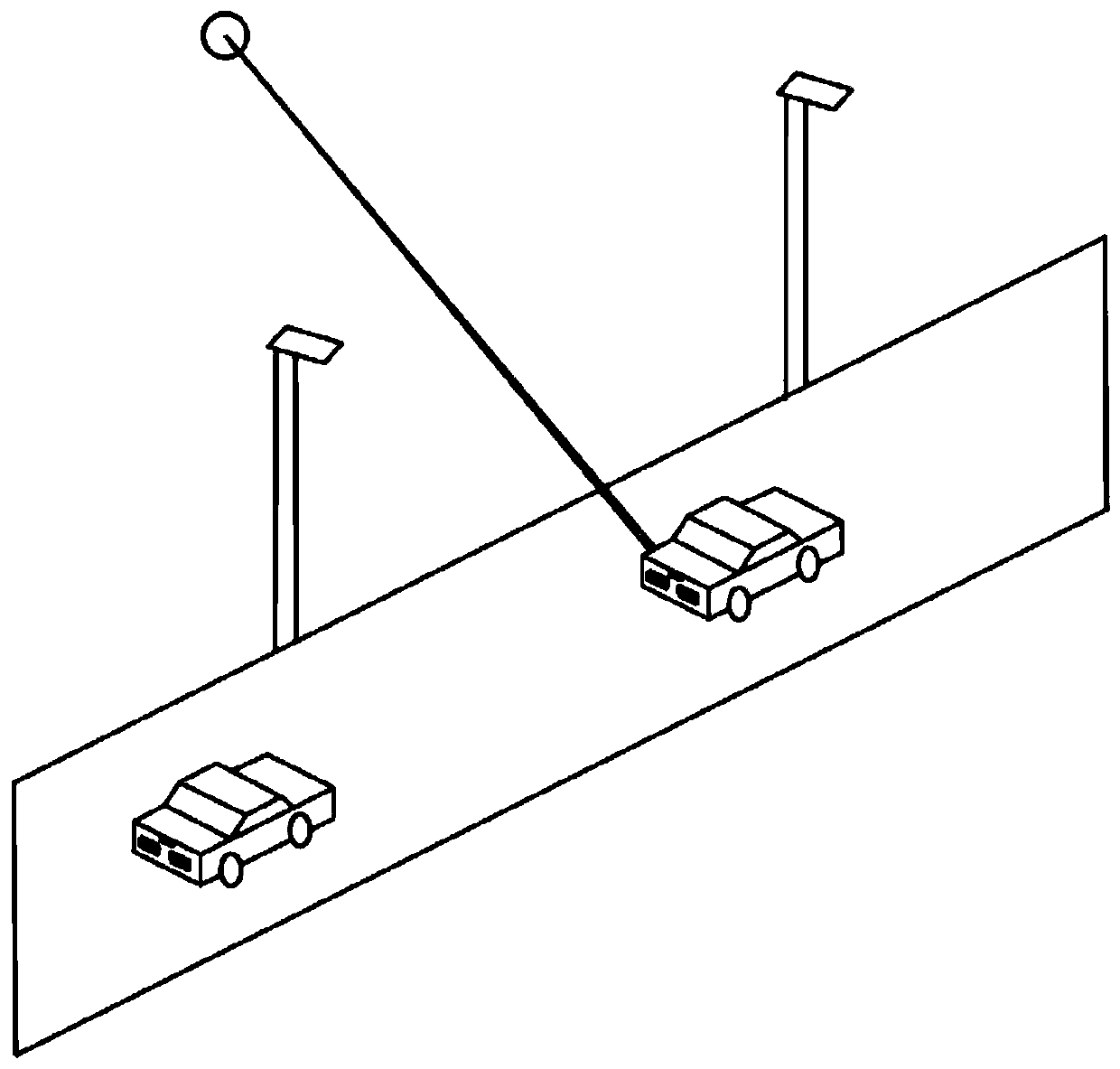Vehicle-mounted visible light communication receiving end device based on a photovoltaic cell
A technology of visible light communication and photovoltaic cells, which is applied in the field of network communication, can solve problems such as non-compliance and increased energy consumption, and achieve the effects of reducing energy supply, reducing energy consumption, and improving environmental energy utilization
- Summary
- Abstract
- Description
- Claims
- Application Information
AI Technical Summary
Problems solved by technology
Method used
Image
Examples
Embodiment 1
[0041] refer to image 3 , the current space where the vehicle-mounted visible light communication receiver device in this embodiment is located is a daytime environment, and the ambient light source includes the sun light source and the daytime running light source. The energy threshold is required. At this time, the photovoltaic module not only supplies the electric energy converted from light energy to the visible light receiving module for normal operation, but also stores the surplus electricity in the energy storage element 6 in the form of DC energy.
Embodiment 2
[0043] The difference between this embodiment and Embodiment 1 is that the current space in this embodiment is a nighttime environment, and the ambient light sources include ambient light sources such as street lamps and driving light sources.
[0044] refer to Figure 4 At this time, the ambient light source is weaker than that in the daytime, and the photovoltaic module converts the light energy of the ambient light source (such as street lamp) and driving light source into electrical energy. When the conversion energy is lower than the energy threshold required by the visible light receiving module, and it is difficult to support the normal operation of the visible light receiving module, this device can reversely supply the DC energy stored in the energy storage element during the day to the visible light receiving module to ensure its normal operation.
PUM
 Login to View More
Login to View More Abstract
Description
Claims
Application Information
 Login to View More
Login to View More - R&D Engineer
- R&D Manager
- IP Professional
- Industry Leading Data Capabilities
- Powerful AI technology
- Patent DNA Extraction
Browse by: Latest US Patents, China's latest patents, Technical Efficacy Thesaurus, Application Domain, Technology Topic, Popular Technical Reports.
© 2024 PatSnap. All rights reserved.Legal|Privacy policy|Modern Slavery Act Transparency Statement|Sitemap|About US| Contact US: help@patsnap.com










